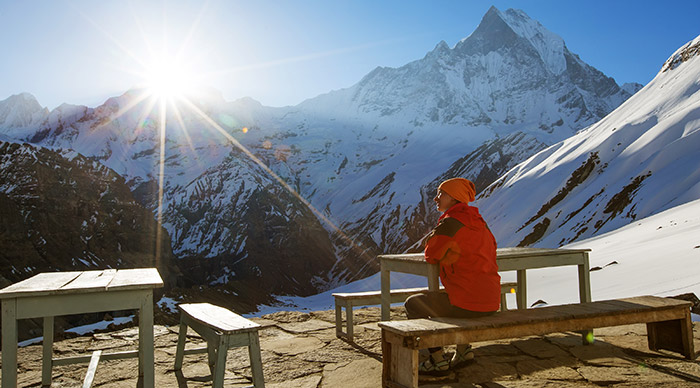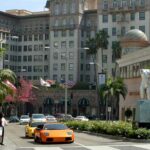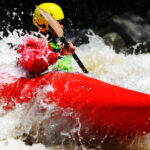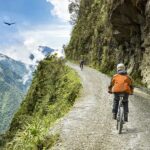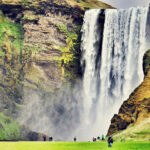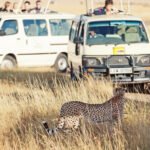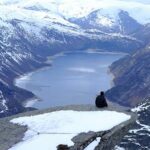There is something rather charming about trekking in Nepal during the monsoons. Fall might be the most popular season, and it also gets a lot of footfall, but there are a number of treks that are great to trek during the monsoon season. Read on to find out how you can get the most out of your trekking adventures in the country, and discover the best treks in Nepal during the monsoons.
Quick Facts
- The monsoon season lies between mid-June and early September.
- The average temperature around this time is 71 degrees Fahrenheit (22 degree Celsius), and it keeps going down as you start gaining altitude.
- The average rainfall is between 135 – 325 mm, with July being the wettest month.
- Rains usually occur during the evening and night, so you can expect anything between 7 to 11 hours of sunshine, depending on your location.
Why Trek During the Monsoon Season?
More and more people are opening up to the idea of trekking during the monsoons. The benefits of trekking in monsoons are unsung and the lack of crowds means that you get the place all to yourself! Here are just some of the reasons why you should explore Nepal during the monsoons.
- Beautiful Sunrises: It usually rains during the night, and by morning the skies start clearing up. The sight of the sun’s rays breaking through those rain-bearing clouds, drenching the rain-soaked mountains with their glittery hues, is one of the most spectacular sights in the world.
- Have the Mountains All to Yourself: The trails are usually deserted during the monsoon season. If you’re dying for some isolation and wish to have the best of nature all to yourself, a monsoon trek in Nepal is probably the best experience for you. It’ll just be you and the mountains!
- Lush, Green Beauty: The Nepalese Himalayas are particularly beautiful during the monsoons. Many trails are bursting with lush vegetation, and flowers are blossoming everywhere. The agricultural terraces look stunning throughout this season as well.
Best Places to Trek this Monsoon
There are so many treks in Nepal that feel particularly amazing during the monsoon season. Most of these treks lie in the rain shadow regions, places where rain-producing clouds get blocked by those dramatic mountains. Simply put, while the rest of the land gets drenched in rain, these poor souls tend to lose out. It’s not to say that there will be no rain in these areas, but it will be considerably lower. Here are some of the best monsoon treks for you to try out this monsoon, in no particular order:
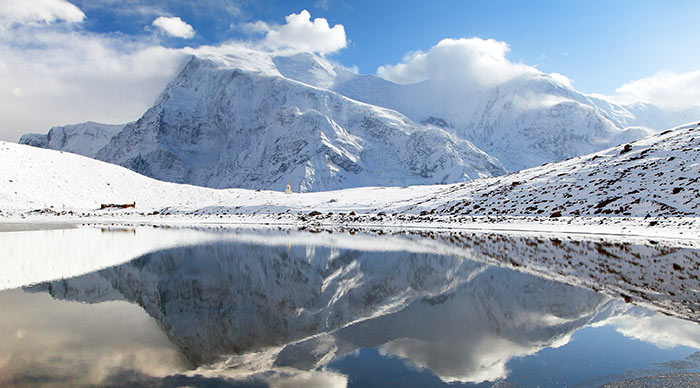
The upper sections of Annapurna Circuit, towards Manang, and Thorong La Pass, and into Muktinath, fall under the rain-shadow region. The views of the Annapurna Mountain and Muktinath are absolutely breath-taking during this period and the agricultural fields of Manang will also be lush and splendidly green, thanks to all that rain. The trails in this circuit are well-marked, so you’ll never have to worry about getting lost and those delicious-looking Nepali teahouses and friendly locals will make sure that you have plenty of rest, food and cultural exchange surrounding you throughout your tour.
- Duration: 13- 14 Days
- Getting There: Start the circuit from Bhulbhule, and head up to Jomsom, as these are the easiest areas to access.
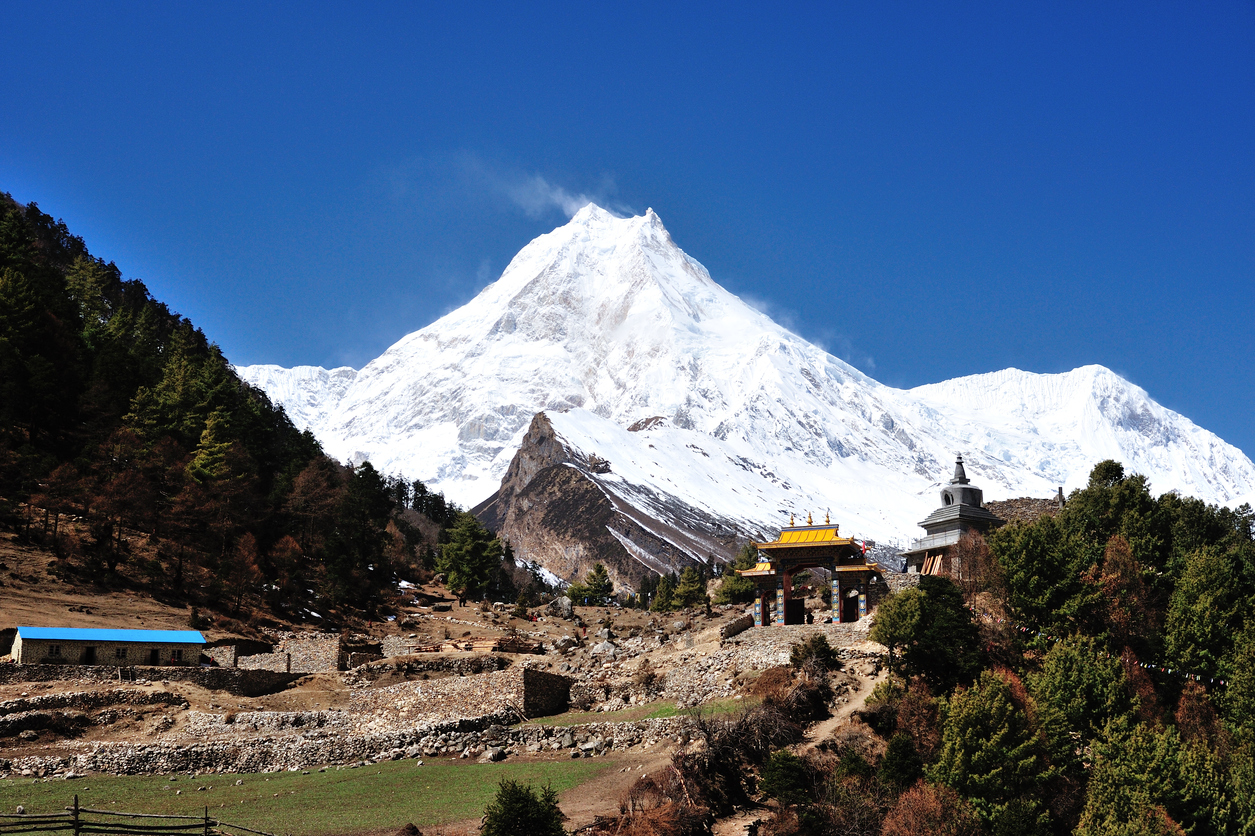
As with the Annapurna Circuit the great Manaslu trek also lies in the rain shadow and hence, is ideal during the monsoon season. In recent years, the Manaslu trek has become more and more popular due to road building on some parts of the Annapurna Circuit trek. The Manaslu trek has no read building, and where the Annapurna Circuit trek treks around the Annapurna range the Manaslu trek treks around Mt. Manaslu, the world’s eight highest mountain. Where trekkers are crossing the Thorong La The Manaslu trek is remote, pristine and one of Nepal’s best treks. We highly recommend this trek during the monsoon season.
- Duration: 14 days
- Getting there: You will start the Manaslu trek from Arughat and trek you way up from 700 meters and up to 5100 meters, crossing the Larke Pass. It’s a 7 hours bus journey from Kathmandu to the trek starting point.
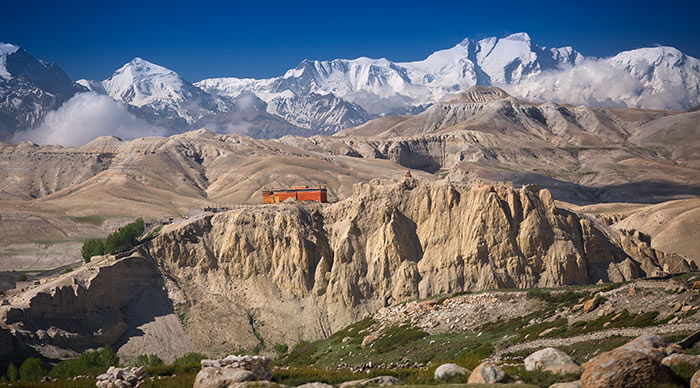
This is one of the most popular (and most expensive) treks in Nepal. The entire trek is in the rain-shadow region, so you won’t have to worry about the rains at all. The trail leads you through arid, 4000-meter mountain passes, with the backdrop of some of the highest peaks in Nepal. Through the course of the trail, you will pass by the world’s deepest gorge (Kali Gandaki), isolated villages like Kagbeni, Chhuksang and Ghame, and the Tibetan cultural center of Lo Manthang, the forbidden kingdom.
- Duration: 14 Days
- Getting There: The rains might make it difficult for you to get to the trail by road, so it is recommended that you fly into Jomsom.
Dolpa Circuit
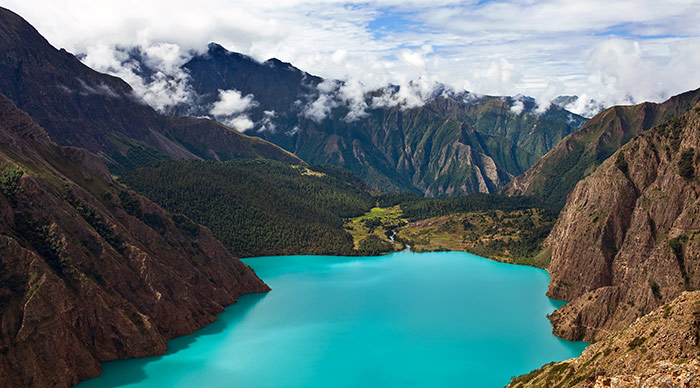
Dolpa is a highly underrated trekking circuit in Nepal. The area was closed to foreigners till 1989, so much of it still maintains a mystery. If you want to escape from the rest of the world and reconnect with nature, this is the best spot for you to do so. The trail is centered on the Lake Phoksundo, which is Nepal’s deepest lake. Its location between the mountains and a rich blue color makes it look rather magical. The area also has a lot of cultural offerings and it is worth spending some time at the Tshowa Monastery to learn more about the Buddhist culture.
- Duration: 12- 14 Days
- Getting There: Start and end the trek at Juphal. Juphal can be reached from Nepalgunj, which is well connected to Kathmandu by flight. The roads to Juphal might be blocked due to the rains, so a flight is the best option.
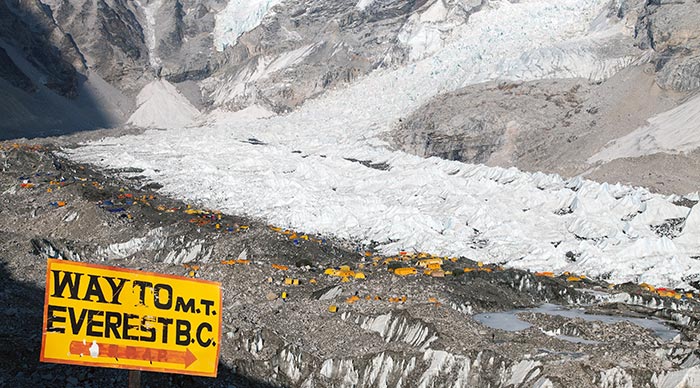
The trek to Everest Base Camp is one of the most crowded trails in the entire world, but during the monsoons, the crowds tend to thin out significantly. While there will be some amount of rain towards the beginning of the trek, as you ascend to higher altitudes, the rains will reduce, presenting some of the most magical landscapes on the planet. The trail is one of the most beautiful in the world- the view of the tallest mountain in the world from Kala Patthar itself makes the entire trek worth it. The beautiful Namche Bazaar, Tengboche Monastery, and Khumbu Glacier all await you in this trail.
- Duration: 12-13 Days
- Getting There: You can fly to Lukla from Kathmandu, and start the trail by walking to Phakding.
Humla’s Limi Valley Trek
Humla is another underrated travel destination in Nepal due to its remote location. This isolated trail gives trekkers an unparalleled panoramic view of the mountains, especially of Mt. Saipal and Mt. Kailash, and also the chance to immerse oneself in the Buddhist culture of the region. Limi Valley used to be an ancient trade route- one you can still follow from Hilsa (where Nepal’s longest river, Humla Karnali, enters the country) after crossing the Nara La Pass. If you are lucky, you can end up spotting the elusive snow leopard, or the more common musk deer, and blue sheep.
- Duration: 17- 21 Days
- Getting There: You can reach the Limi Valley trek by getting to Simikot. Simikot is accessible by air (which is the safest option during the monsoons). It is difficult to get to Simikot by road, as the nearest route is from Hilsa, which is 50 kms away.
